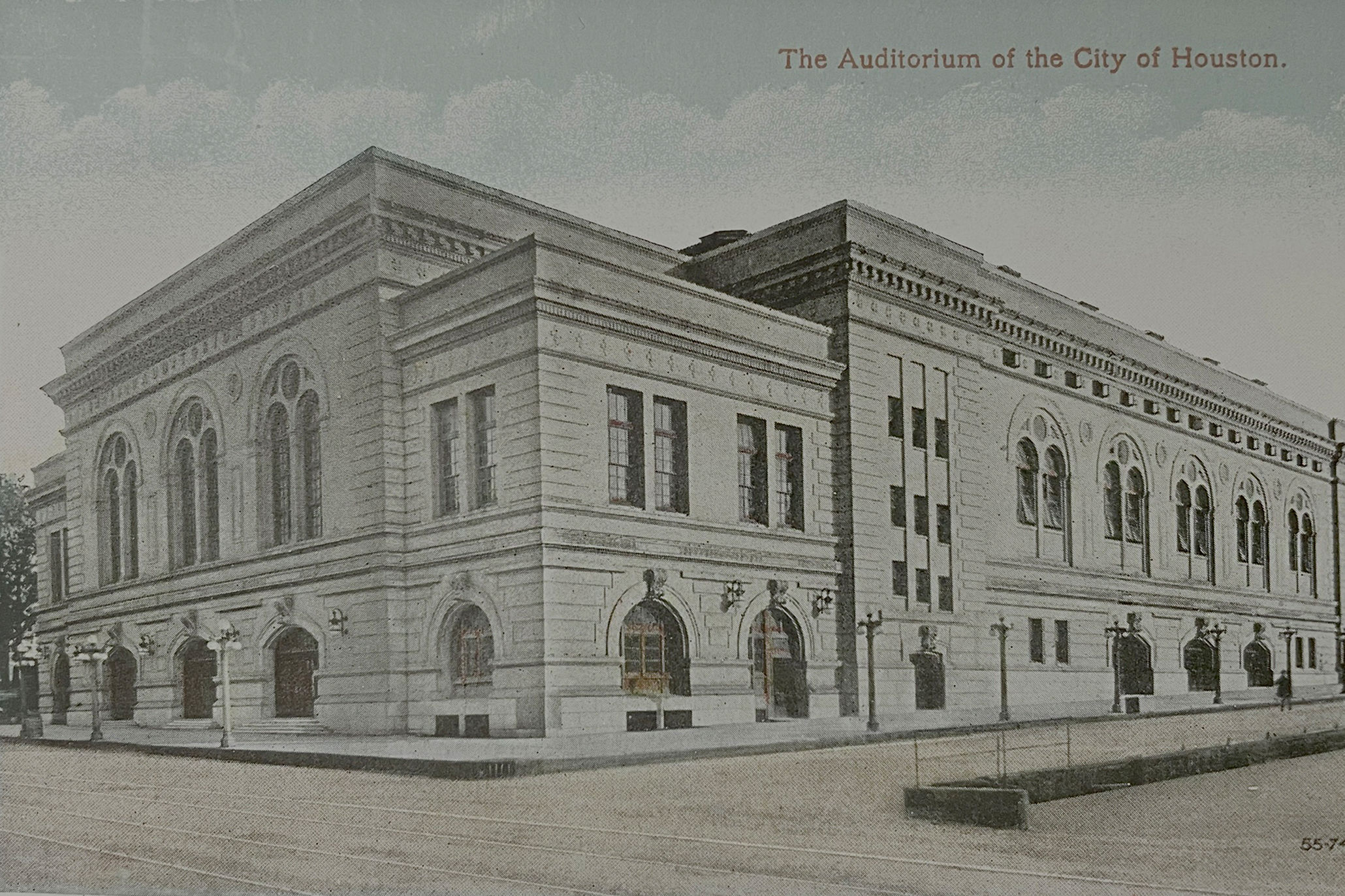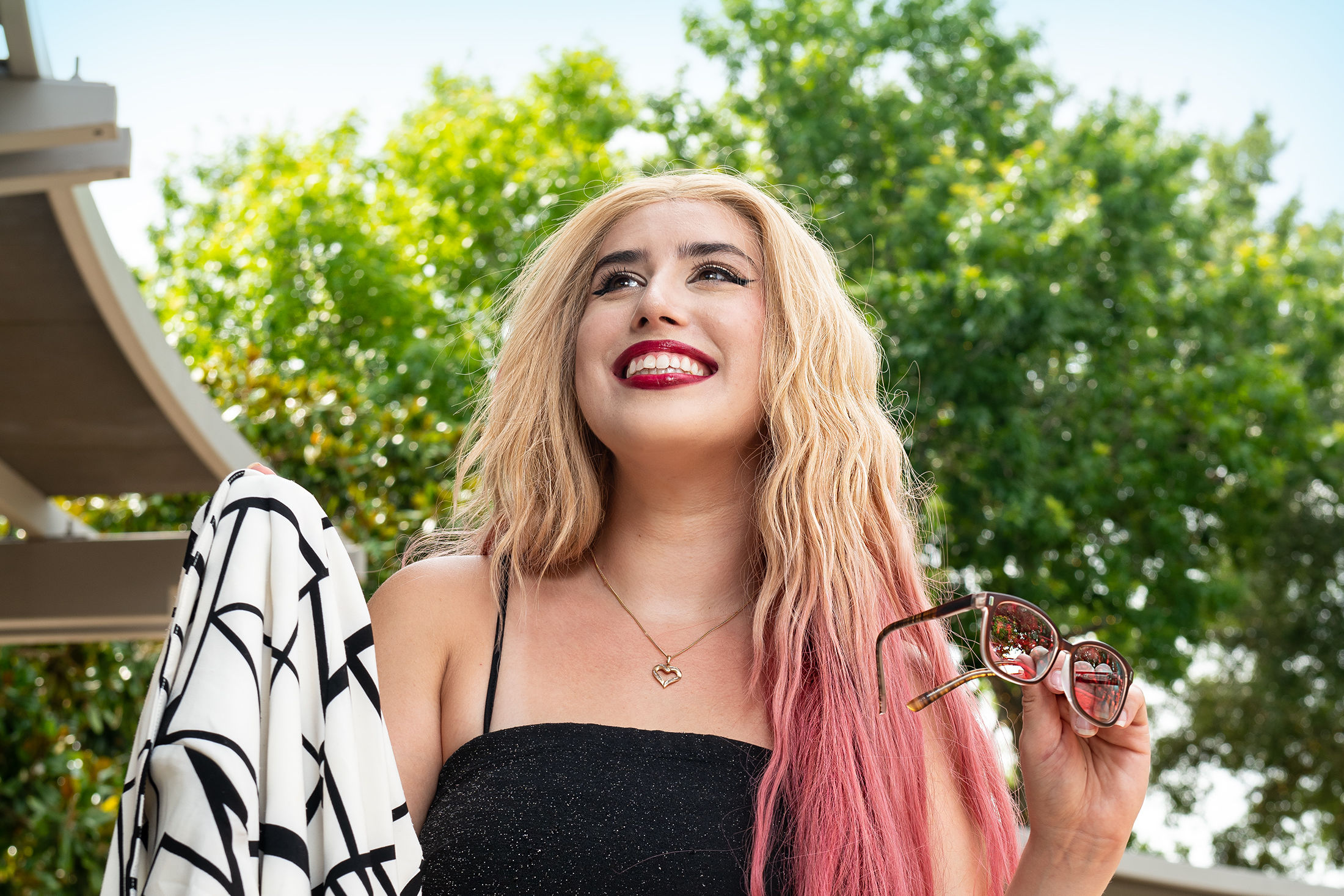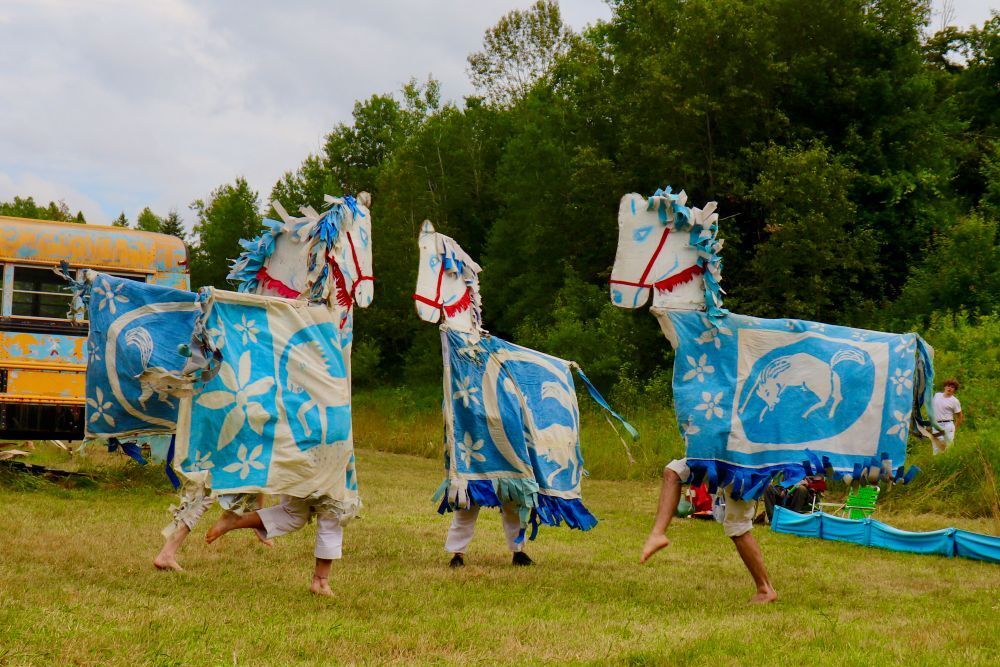This Houston Artist Wants to Open Energetic Portals with Her Work
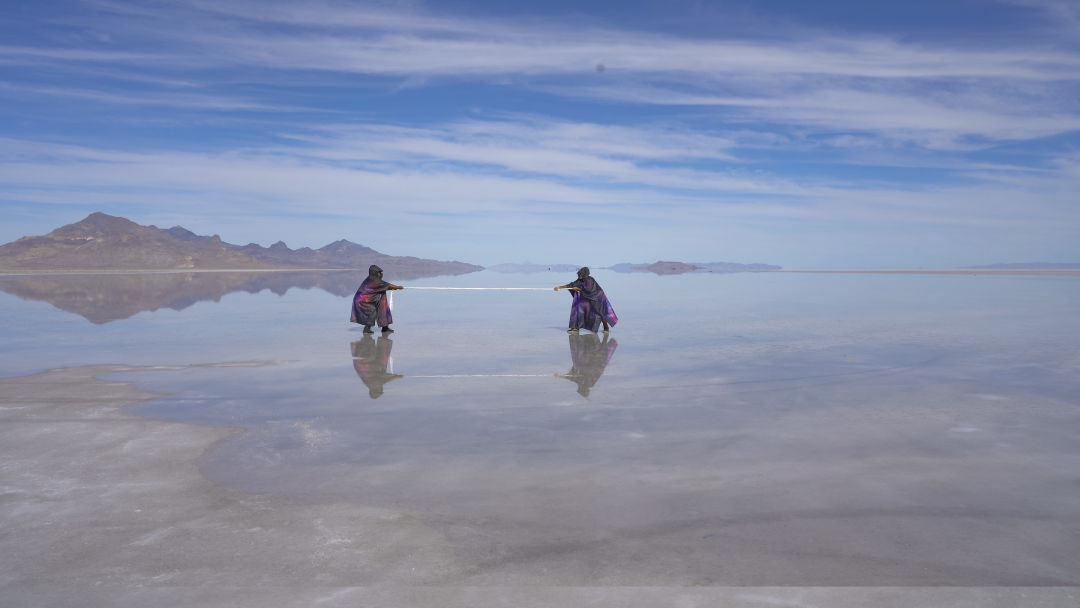
Artists Li Harris and Alisha B. Wormsley play tug of war in Salt Flats, Utah, in this production photo from D.R.E.A.M. = A WAY TO AFRAM.
Image: Courtesy Li Harris
Early on in the pandemic, Houston artist Li(sa E.) Harris, known simply as “Li,” found herself far from her Third Ward home in the windswept plains of Marfa, engaged in a sound residency at Ballroom Marfa, a contemporary art space nestled in a 1920s-era ballroom in the tiny, art-focused town. Harris was one of the inaugural artists of the organization’s new residency program, The Farther Place, which invites in artists and musicians to create new experimental work. In September, Houstonians will be able to catch a glimpse of the world she’s created through a new installation at DiverseWorks.
There are few Houston artists more familiar with the experimental than Harris, a 2022 Guggenheim fellow and Harvard guest lecturer whose long list of creative titles includes interdisciplinary artist, filmmaker, creative soprano, composer, improviser, researcher, educator, and creative producer. Her work often draws from all those areas at once and is known to explore the energetic relationships between body, land, spirit, and place—apt areas of study for a residency program centered around the experimental.
As Harris settled into her residency, the world—and particularly the world of Black Americans—was beginning to erupt as the long history of police brutality against Black and brown bodies was brought more fully into the public dialogue after George Floyd’s murder, and protests spread across the nation. Harris’s seclusion in a town of 2,000 people, far from any major cities or protests, provided her with the space necessary to artistically meditate on and transmute that collective trauma into artistic action.
“Even though I’m a Texan, I was in a place that people consider deserted. As a Black woman, especially during the pandemic, where there was a lot of heightened visibility of violence against Black people, a lot of people would call to make sure I was safe. I actually felt very safe there; I felt safe in the vastness, in the emptiness,” Harris says. “I had a good artistic meditation on what that means and how I had never actually experienced that as a city girl. I kept thinking about how no one was there, but I felt like everyone was there. And so, I started playing on the idea of an alternate reality to the place I was at.”
That alternate reality would come to be known as AFRAM (Marfa spelled backwards), an inner meditative space of transcendence, survival, preservation, and joy where Black people could simply exist—a space reached through sound. That world will be reachable by Houstonians from September 6–9 when her ongoing collaborative project, D.R.E.A.M = A WAY TO AFRAM, will be on display at DiverseWorks at the Midtown Arts and Theater Center Houston (MATCH). The installation will include sound, video, soft sculptures, live performances, and workshops, all working together to create energetic portals to transport members of the audience to AFRAM.
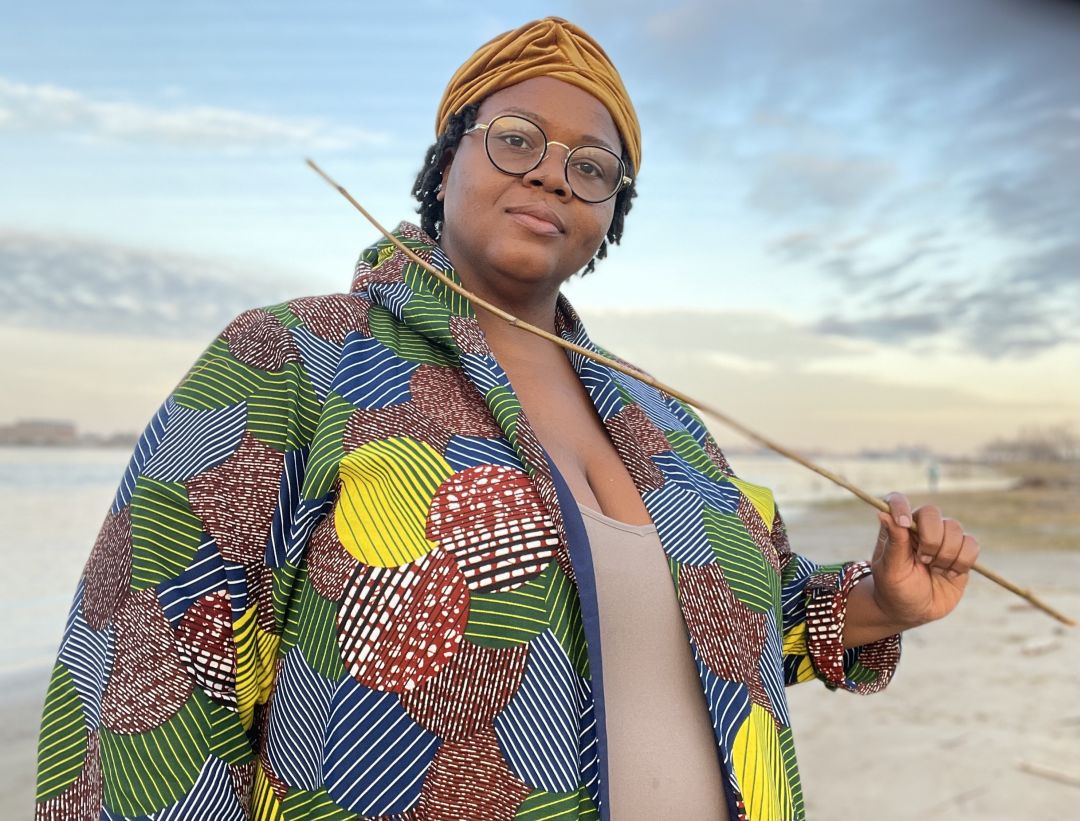
Li Harris's long list of creative titles includes interdisciplinary artist, filmmaker, creative soprano, composer, improviser, researcher, educator, and creative producer.
Image: Courtesy Li Harris
The installation is connected to an earlier work Harris created as part of her residency in Marfa. For that project, which now includes an exhibition titled unlit: sof landin at Ballroom Marfa, Harris explored sound as a medium for liberation and resistance. The work features a nine-hour musical composition as well as nonlinear film and sculpture, with the aim of transporting people to AFRAM while they relax and listen to a sonic collage created through a combination of field recordings, improvisational performances, vibraphone, chimes, vocal fragments, and Wurlitzer piano.
Elements of that exhibition will be included in her new DiverseWorks installation, which also includes new material created with artistic collaborator Alisha B. Wormsley, who was also a 2022 Guggenheim fellow. As part of the collaboration, the two artists filmed themselves playing games of tug of war across various landscapes—from Marfa to Rome, Morocco, and Utah—in order to open portals to AFRAM.
“We made this collection of video activations of a really strong image of two people. You can’t really tell our ethnicity or gender, but we are two Black women playing tug of war in various places,” Harris says. “Our intention was to open up portals and energetic fields of liberation for Black people.”
Harris’s installation at DiverseWorks will include projections of these videos, which will be overlaid by the sonic landscape deployed in her Marfa exhibition, only she will also be playing live on top of the existing soundscape utilizing chimes, voice, and theremin to create a multi-dimensional sound experience.
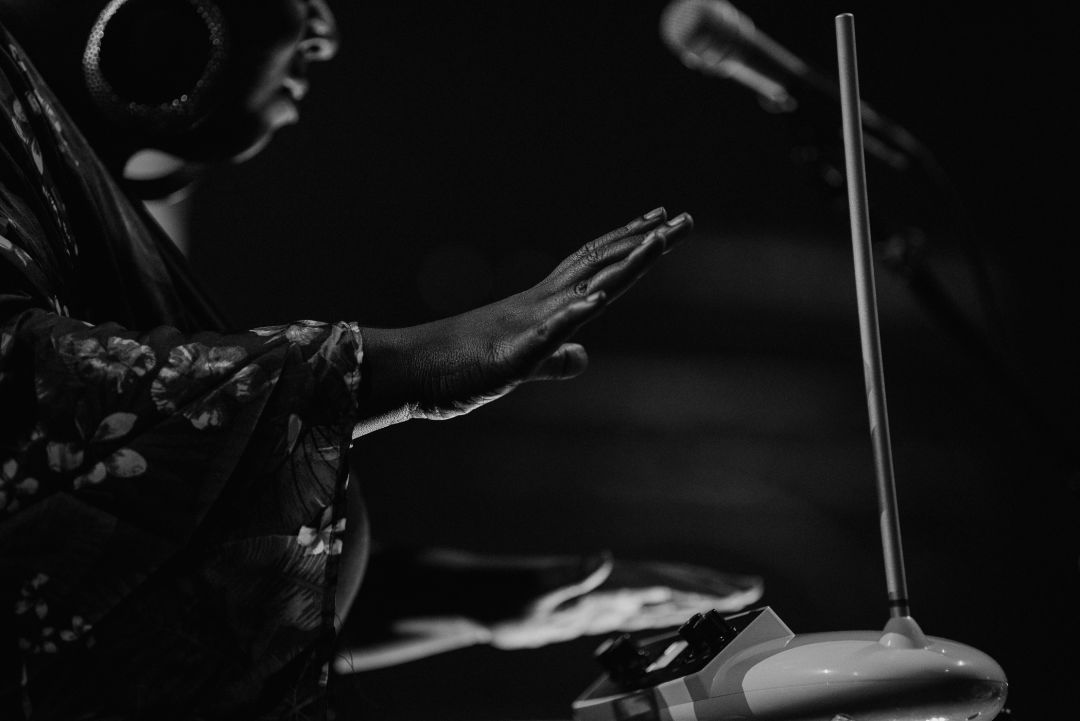
During her performances at DiverseWorks, Li Harris will be playing the theremin, an electronic musical instrument controlled without physical contact.
Image: Courtesy Randall Starr
The installation’s live performances will be held on Thursday, September 7 and Friday, September 8 at 8 p.m. through a sonic benediction in honor of awakening the AFRAM portal. Sounds will be provided by Harris as well as Michelle Coltrane, Joy Guidry, Houston Boychoir, and Abijan Johnson.
Then on Saturday, September 9 from 11 a.m. to 1 p.m. and again from 1 to 4 p.m., Harris and Wormsley will host an interactive sound experience and research-based workshop. It will feature a live tug of war performance from the two artists in which they will open a portal to AFRAM before inviting members of the audience to open their own portals by playing tug of war with each other. The workshop will be filmed for later use in the project.
Through the live musical and physical performances, Harris’s intent is for participants to slow down and exist in a sonically engineered safe space where they can find a sense of inner calm. While the outside world remains a dangerous place for Black and brown bodies, Harris hopes that by opening these portals, people will be able to find some sort of reprieve—even if it is fleeting.
“Liberation is always a human quest; I don’t know if we’ll reach that. For me, this is even one step more basic than liberation; this is just about existing. I imagine AFRAM as a space of being and an expansion of our consciousness,” she says. “In my imagination, it’s a place where Black people, who are some of the most marginalized people in our world, can just be.”

